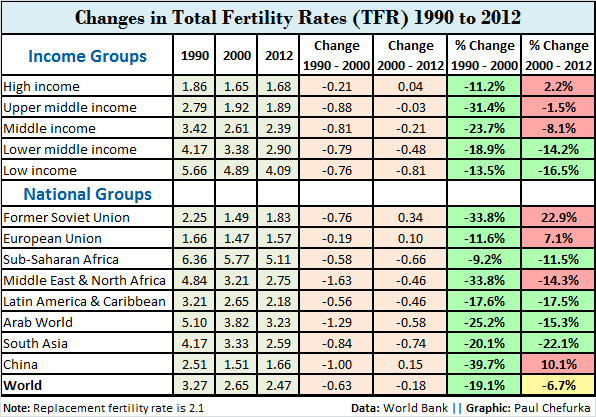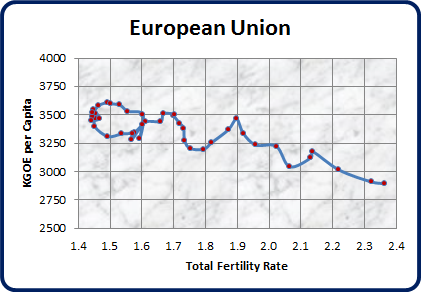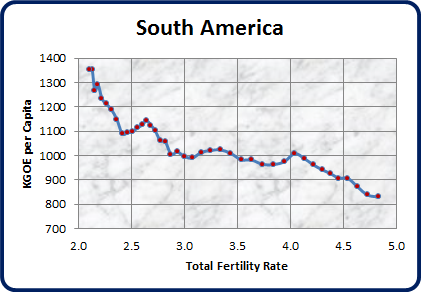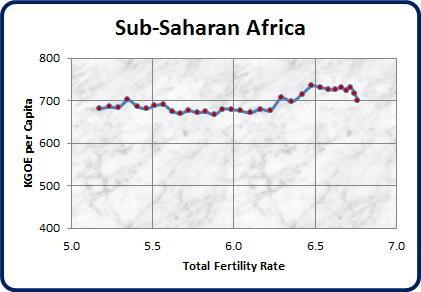Economic and energy correlations with human fertility
Recently I've been mining the World Bank dataset to find out how the world is doing in our efforts to curb population growth. In the process I discovered a few interesting things.
One is that almost half the world's population lives in countries whose Total Fertility Rate (TFR) is below the replacement value of 2.1. A less optimistic finding is that the ongoing drop in fertility rates has slowed recently. In some places it has even reversed direction and begun to climb.
Overall, I found that fertility rates around the world are not declining as fast as they need to in order to promote a near-term peak in population levels. In particular, the world's performance in the last decade or so has been anemic compared to the decade of the 90s.

The Former Soviet Union, the European Union and China made particularly poor showings over the last decade. In dramatic contrast, low income nations including sub-Saharan Africa have done extremely well at reducing their high fertility rates.
Along the way I found support for both the Demographic Transition Theory (i.e. the more industrialized and wealthy a nation becomes, the more its fertility rates fall) and for Virginia Abernethy's Fertility Opportunity Hypothesis, which predicts that fertility rates will follow perceived future economic opportunity.
The European Union and South America provide examples of how rising industrialization and wealth promote lower fertility rates. In the following scatter plots I use per capita primary energy consumption as the proxy for industrialization:


In contrast, Sub-Saharan Africa is reducing their fertility rates without increased energy use, possibly by increasing education:

The most obvious support I found for Abernethy's Fertility Opportunity Hypothesis came from the former Soviet Union. Its economic crash in 1989 prompted a rapid reduction in fertility rates, and its recovery was followed seven years later by rising fertility rates:

When the FSU's fertility rates are mapped against its per-capita energy consumption, the crash is revealed as declining fertility coupled with declining energy use. This is the opposite coupling for a growing region like South America, where declining fertility is associated with rising energy use. In the following graph the recovery is also visible as the "doubling back" or loop in the lower left:

This finding gives some support to my hypothesis that the only thing (edited to add: other than global thermonuclear warfare or pandemic) that will rapidly reduce population levels as well as the associated CO2 emissions is a severe, sustained economic downturn.





